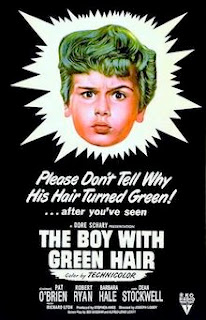Here are some of his great recordings:
Der Fuehrer's Face
In 1942, a strike by the American Federation of Musicians prevented Jones from making commercial recordings for over two years. He could, however, make records for radio broadcasts. These were released on the Standard Transcriptions label (1941–1946) and have been reissued on a CD compilation called (Not) Your Standard Spike Jones Collection.Recorded just days before the recording ban, Jones scored a huge broadcast hit late in 1942 with "Der Fuehrer's Face", a song ridiculing Adolf Hitler that followed every use of the word "Heil" with a derisive raspberry sound, as in the repeated phrase " Heil, (raspberry), Heil (raspberry), right in Der Fuehrer's face!".
More satirical songs
Other Jones satires followed: "Hawaiian War Chant", "Chloe", "Holiday for Strings", "You Always Hurt the One You Love", "My Old Flame", referring to Peter Lorre's voice (impersonated on the recording by Paul Frees) and eerie scenes in contemporary movies, and many more. The romantic ballad "Cocktails for Two", originally written to evoke an intimate romantic rendezvous, was re-recorded by Spike Jones in 1944 as a raucous, horn-honking, voice-gurgling, hiccuping hymn to the cocktail hour. The Jones version was a huge hit, much to the resentment of composer Sam Coslow.Ghost Riders
Spike's parody of Vaughn Monroe's rendition of "Ghost Riders in the Sky" was performed as if sung by a drunkard and ridiculed Monroe by name in its final stanza:CHORUS: 'Cause all we hear is "Ghost Riders" sung by Vaughn Monroe.
DRUNK: I can do without his singing.
FRIEND: But I wish I had his dough!
The official American release edited out the dig at Monroe, because Monroe, a popular RCA Victor recording artist and also a major RCA stockholder, demanded it. The original version was released on the European market in 1949. (A few pressings containing the first ending were mistakenly released on the West Coast and are a prized rarity today.)
All I Want for Christmas
Jones' recording, "All I Want for Christmas Is My Two Front Teeth", with a piping vocal by George Rock, was a number-one hit in 1948. (Dora Bryan recorded a 1963 variation, "All I Want For Christmas is a Beatle".)Murdering the Classics
Among the series of recordings in the 1940s were humorous takes on the classics such as the adaptation of Liszt's Liebesträume, played at a breakneck pace on unusual instruments. Others followed: Rossini's William Tell Overture was rendered on kitchen implements using a horse race as a backdrop, with one of the "horses" in the "race" likely to have inspired the nickname of the lone SNJ aircraft flown by the U.S. Navy's Blue Angels aerobatic team's shows in the late 1940s, "Beetle Bomb". In live shows Spike would acknowledge the applause with complete solemnity, saying "Thank you, music lovers." An LP collection of twelve of these "homicides" was released by RCA (on its prestigious Red Seal label) in 1971 as Spike Jones Is Murdering the Classics. They include such tours de force as Pal-Yat-Chee (Pagliacci), sung by the Hillbilly humorists Homer and Jethro, Ponchielli's Dance of the Hours, Tchaikovsky's None but the Lonely Heart, and Bizet's Carmen.In 1944 RCA Victor released his "Spike Jones presents for the Kiddies" version of Tchaikovsky's Nutcracker Suite, in three 10 inch vinyl 78 rpm records, P-143, arrangement credited to Joe "Country" Washburne with lyrics by Foster Carling. It was released as a three 7 inch 45 rpm vinyl set in 1949 as WP-143 and as a one 45rpm extended play EPA-143 in 1952. An abridged version is also included in the aforementioned album, with a complete version available on the CD collection Spiked: The Music of Spike Jones...



w~~60_35.jpg)


















